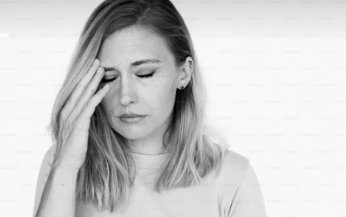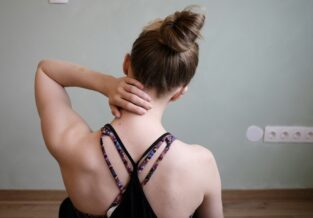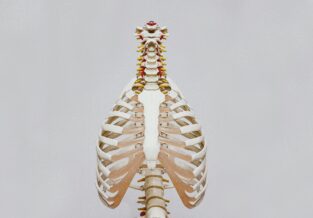Cervicogenic Headache
Published on
21 Aug 2024


Written by
Jacob Stefanoff
Senior Physiotherapist
Call us on: (03) 9975 4133
A Cervicogenic Headache is simply another name for a headache which originates from the neck. It is one of the most common types of headaches.
DEFINITION
Cervicogenic headaches are often called secondary headaches because they originate from a primary underlying neck disorder, frequently with nerve irritation. The good news is that by fixing your neck problem, your headache can be alleviated. Research has shown that upwards of 22% of all headaches seen clinically are cervicogenic.
Any dysfunction in the vertebral joints of the upper neck can limit the range of motion or fluidity of movement and result in nerve irritation. Commonly a history of neck injury, especially whiplash, is found in people who suffer from cervicogenic headaches; although a traumatic injury is not necessary to cause damage to the neck structures. Repetitive or sustained poor postures can over time, also ‘damage’ these structures.
WHAT CAUSES THESE HEADACHES?
Cervicogenic headache typically occurs due to activities placing excessive stress on the upper joints of the neck. This may occur traumatically due to a specific incident (eg. whiplash or heavy lifting) or more commonly, due to repetitive or prolonged activities such as slouching, poor posture, lifting or carrying, excessive bending or twisting of the neck, working at a computer or activities using the arms in front of the body (eg. housework).
SYMPTOMS COMMONLY INCLUDE:
- Gradual onset of neck pain and headache during an activity that irritates the neck structures
- Constant dull ache, normally situated at the back of the head (sometimes behind the eyes or temple region, on top of the head, forehead or ear region).
- Pain is usually felt on one side, but occasionally both sides of the head and face may be affected
- Pain that’s made worse by neck movement or posture
- Stiffness and difficulty turning the neck
- Pain, pins and needles or numbness may also be felt in the upper back, shoulders, arms or hands
- Occasionally you may experience other symptoms, including: light-headedness, dizziness, nausea, tinnitus (ringing in the ears), decreased concentration and an inability to function normally

HOW ARE CERVICOGENIC HEADACHES DIAGNOSED?
A thorough examination from a physical therapist or doctor is usually sufficient to diagnose a cervicogenic headache. Unfortunately X-rays, CT scans and MRIs are not always diagnostic of a cervicogenic headache. You can suffer a cervicogenic headache with or without abnormal findings on X-rays or scans.
On examination, a physical therapist may find:
1. Increased tightness and trigger points in neck and upper back/shoulder muscles
2. Weakness of deep neck flexors
3. Increased or overactivity of the superficial neck flexors
4. Pain localised in the neck and occiput (base of the skull), which can spread to other areas in the head, such as the forehead, orbital region (eyes), temples, or ears, usually on one side
5. Pain starts or is aggravated by specific neck movements or sustained postures.
6. Changes in neck muscle tone, e.g., muscle spasm

HOW CAN PHYSICAL THERAPY HELP?
Unless the origin of the headache ie. the upper neck dysfunction, is treated and corrected, the headache will return in time. Physical therapy treatment will focus on the soft tissue and joint restrictions in the upper neck as well as areas like the front of the neck and upper back area. It may also involve some exercises to strengthen weak muscles and stretch tight muscles.
TREATMENT INCLUDES:
1. Cervical spine (neck) manipulations and mobilisations
2. Myofascial release (a type of deep massage) to release tight structures and muscles in spasm
3. Trigger point therapy to release restricted tight muscles
4. Strengthening exercises of the deep neck flexors and upper back muscles
5. Thoracic spine (upper back) mobilisation and manipulation, Posture correction and re-education of postural muscles
6. Treatments may include the use of acupuncture or dry needling, postural taping or bracing for pain relief.
About the Author
Jacob Stefanoff — Senior Physiotherapist
Jacob has a very caring and empathetic nature and uses a holistic approach to rehabilitation. He has worked in multiple private practice settings in Sydney along side Olympic Sports Specialist Physiotherapists with professional athletes in their sporting fields. Jacob has experience with complex chronic pain, nerve pain and experience with complex lumbar spine, pelvic and hip conditions.


